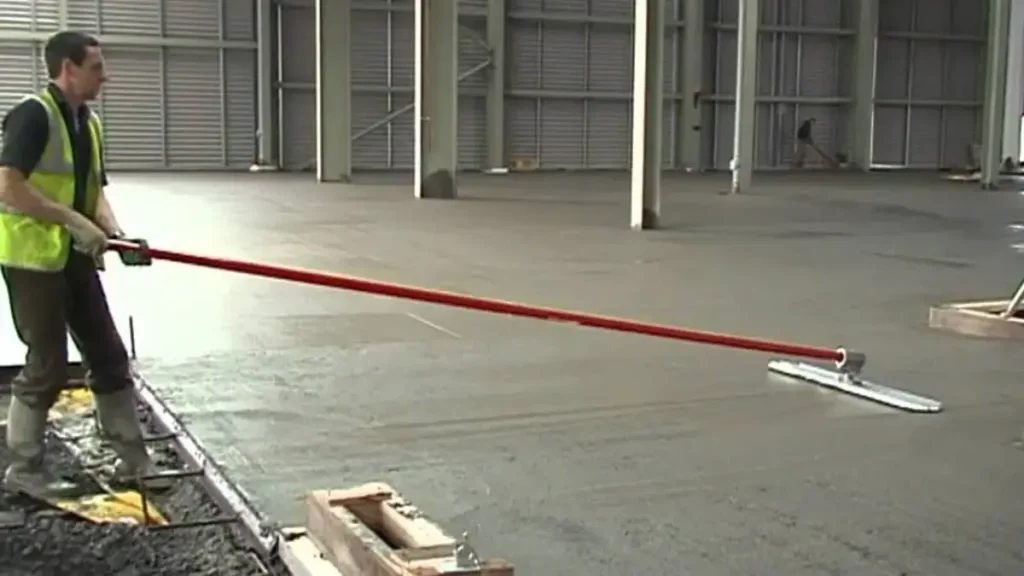Imagine walking through a field where the soil is perfectly leveled, drainage is optimized and crops thrive like never before. This is not just a dream it’s the reality that many farmers are achieving with the help of concrete floats. These innovative tools have revolutionized agricultural practices by enhancing land management and crop growth.
Concrete floats might sound simple, but they pack a punch in efficiency and effectiveness when it comes to preparing fields for planting. But how exactly do we use them in agriculture? Let’s delve into their fascinating history, explore their benefits and uncover practical techniques that can transform your farming game.
What is a Concrete Float?
A concrete float is a flat, rectangular tool used primarily in agriculture for leveling soil surfaces. Typically made from durable materials like steel or high density polyethylene, it provides a smooth finish on freshly tilled land.
These floats are designed to glide over the surface of the soil. They distribute weight evenly and create an optimal seedbed for planting. The design allows for efficient handling and maneuverability across various terrains.
Farmers often attach concrete floats to tractors or other agricultural machinery. This integration streamlines field preparation processes and enhances productivity.
In essence, a concrete float simplifies many labor intensive tasks while ensuring that fields remain well-prepared for successful crop growth. It serves as an essential instrument in modern farming practices, combining technology with traditional techniques to improve yield quality and efficiency.
History of Concrete Floats in Agriculture
The use of concrete floats in agriculture dates back to the early 20th century. Farmers sought innovative solutions for leveling and smoothing soil surfaces, which are crucial for effective water drainage and crop growth.
Initially, these floats were simple tools made from wooden planks. As farming practices evolved, so did the materials used in agricultural equipment. Concrete emerged as a durable alternative that could withstand harsh weather conditions.
In the mid-1900s, farmers began adopting concrete floats on larger scales. The benefits became clear improved land preparation led to higher yields and more efficient farming operations.
Today, concrete floats have become essential in modern agriculture. Their ability to provide an even surface enhances irrigation efficiency while reducing erosion risks. This evolution reflects ongoing advancements within the agricultural sector aimed at maximizing productivity and sustainability.
Benefits of Using a Concrete Float in Agriculture
Using a concrete float in agriculture offers several advantages for farmers and land managers.
These tools provide an effective way to smooth soil surfaces. This creates an even planting bed, which is essential for successful crop growth.
Concrete floats help improve water drainage. They level the ground and reduce pooling, ensuring that crops receive adequate hydration without excess moisture.
Additionally, using a concrete float can enhance soil compaction. Properly compacted soil supports root development while minimizing erosion risks.
Moreover, they are durable and require minimal maintenance compared to other agricultural equipment. This longevity makes them a cost-effective choice over time.
Employing a concrete float promotes uniformity across large fields. Consistent conditions lead to better yields and more efficient harvesting processes.
Different Types of Concrete Floats and Their Uses
Concrete floats come in various types, each designed for specific tasks in agriculture. The basic hand float is a versatile tool, great for smoothing surfaces and ensuring even distribution of soil or concrete.
Then there’s the power float, which operates on electricity or gasoline. This machine provides an efficient way to finish large areas quickly. It’s particularly useful when working with expansive fields or barns.
Another type worth mentioning is the bull float; this larger version can cover more ground at once. It’s ideal for leveling cement slabs before they set, making it perfect during construction projects on farms.
Specialty floats like grooved or textured varieties help create patterns and enhance drainage features in fields. Each type serves distinct purposes that cater to different agricultural needs and practices.
Techniques for Using Concrete Floats
Using concrete floats effectively requires some technique. Start by choosing the right conditions. Wet soil or slightly damp ground can yield the best results.
When applying a float, maintain a steady hand and controlled pressure to achieve an even surface. This prevents unnecessary gouging that can disrupt your work.
For larger areas, consider using long strokes in a consistent direction. It helps distribute the weight evenly across the float, ensuring a smooth finish without leaving behind marks.
Adjust your speed according to the material’s texture. Slower movements are beneficial for tricky terrains where precision is key.
Don’t forget to clean your float regularly during use. This minimizes buildup and ensures better performance throughout your task, allowing you to create that ideal farming surface with ease.
Tips for Maintaining and Repairing Concrete Floats
To keep your concrete float in top shape, regular inspections are key. Look for cracks or chips after heavy use. Early detection can prevent bigger problems later.
Cleaning is crucial too. Remove debris and mud to avoid wear and tear on surfaces. A simple wash with water often does the trick.
When repairs are needed, use a quality concrete patching compound. Follow manufacturer instructions closely for best results.
Sealant application helps protect against moisture damage. This extra layer adds durability and extends the life of your float, making it more efficient over time.
Store your floats indoors if possible during off seasons to minimize exposure to harsh weather conditions. Proper storage significantly reduces deterioration risks.
Keep an inventory of spare parts handy for quick fixes when issues arise unexpectedly. This proactive approach ensures that you’re always prepared.
How to Use a Concrete Float in Farming
Using a concrete float in farming requires a few simple steps to set up effectively. Start by choosing the right time to prepare your fields, preferably when the soil is slightly moist but firm.
Begin at one corner of your field and slowly push the float across the surface. This action will help level out uneven areas while breaking up any clumps of dirt.
As you move forward, apply even pressure to ensure consistent results. It’s important to work in straight lines for uniformity and better coverage.
After you’ve finished one pass, inspect your work before making subsequent passes. Adjust your technique based on what you see; some areas may need more attention than others.
Remember that patience is key allowing each section adequate time for drying can yield excellent outcomes without damaging crops or soil structure.
Case Studies: Successful Implementation of Concrete Floats in Agriculture
One notable case study comes from a mid-sized farm in the Midwest. The owner adopted concrete floats for leveling fields post-planting. The results were impressive uniform water distribution and improved crop yields.
Another example is a vineyard in California that faced erosion issues. By incorporating concrete floats, they created stable pathways between rows of grapevines. This not only reduced soil compaction but also enhanced accessibility during harvest seasons.
In Australia, a cattle ranch implemented concrete floats to manage feedlots effectively. They found that using these structures minimized waste runoff while promoting better hygiene for livestock.
An organic vegetable grower used lightweight concrete floats to establish raised beds efficiently. This technique maximized space and optimized drainage, leading to healthier crops with minimal effort. Each of these cases highlights innovative uses of this versatile tool in agriculture today.
Potential Challenges and Solutions
Using concrete floats in agriculture can present several challenges. One common issue is the weight of the float itself. Moving heavy equipment across fields may compact soil, affecting crop yields.
Another concern is the potential for wear and tear over time. Concrete can crack or chip if not handled properly, leading to costly repairs.
Weather conditions also play a role. Rain and humidity can create slippery surfaces, making it difficult to operate effectively without risking accidents.
Solutions do exist for these challenges. For instance, using lighter materials or reinforced designs can mitigate weight concerns while maintaining durability.
Regular maintenance checks help identify cracks early on before they become significant issues.
Additionally, implementing proper training for operators ensures safe handling under diverse weather conditions, reducing risks associated with wet surfaces.
conculsion
Concrete floats have become an essential tool in modern agriculture, enhancing efficiency and productivity. Their versatility allows farmers to tackle various tasks, from leveling soil to managing irrigation systems. As we explored, these tools have a rich history and continue to evolve with technology.
The benefits of using concrete floats are numerous: they improve land preparation quality, streamline farming operations, and can even reduce labor costs over time. Different types cater to specific agricultural needs knowing which float is best suited for your task can make a significant difference.
Implementing a concrete float may present challenges like maintenance or initial investment costs; however, understanding the techniques involved can mitigate these issues effectively. Careful upkeep ensures longevity and performance.
Farmers who embrace innovative approaches often see remarkable results. Those case studies highlight how well-executed use of concrete floats leads to increased crop yields and improved resource management.
As agriculture continues to evolve with sustainable practices at its core, tools like the concrete float will remain crucial allies in meeting future demands while preserving our environment. Adapting traditional methods with modern solutions fosters resilience in this vital industry that feeds us all.



